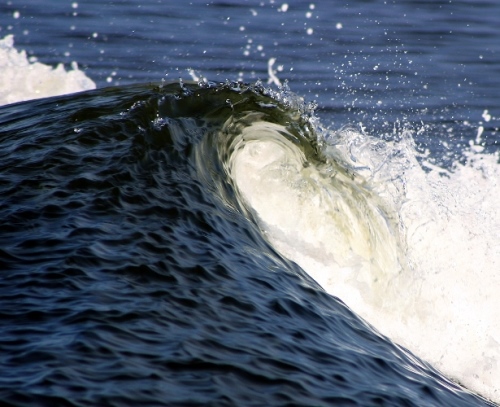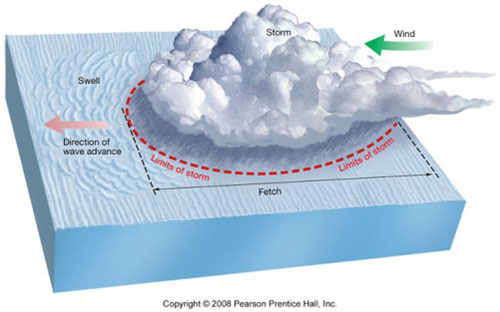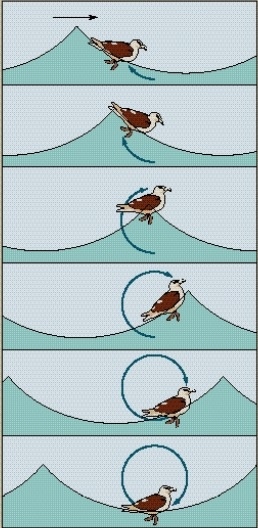ATSC 113 Weather for Sailing, Flying & Snow Sports
Wave Formation
Learning Goal 8a: Describe wind velocity, fetch, duration, and drag, and how they relate to ocean-wave creation.
What is a Wave?
The ocean is in constant motion. Waves form as a result of the water’s motion, gravitational forces, and winds. The most common waves we see are created by wind. However other waves include those created by gravitational forces (e.g. tidal waves) and those created by underwater disturbances, such as earthquakes (e.g. tsunamis).

Source: Malene Thyssen - Own work, CC BY-SA 3.0, https://commons.wikimedia.org/w/index.php?curid=651071
There are three main factors that affect wave formation: wind velocity, fetch, and duration. Wind velocity is the speed of the wind, fetch is the distance over the water that the wind can blow uninterrupted (which can be huge distances out at sea), and duration is the amount of time the wind blows over that patch of water. The greater the wind velocity, the longer the fetch, and the greater duration the wind blows, then the more energy is converted to waves and the bigger the waves. However, if wind speed is slow, the resulting waves will be small, regardless of the fetch or duration. It takes all three factors acting together to create big waves.
Waves often result from storms, which tend to move across the ocean with the prevailing winds. So although a storm might only have 500 nautical miles (nm) of fetch, the storm can travel greater distances, say 1,000 nm, creating a travelling fetch of more than 1,000 nm.

Source: EOSC114
When wind moves across the water’s surface, it creates frictional drag.
Drag is a force that acts against the
relative motion of one fluid with respect to another fluid. A "fluid"
is anything that flows easily, such as gases (air) and liquids (water).
For our situation, the two fluids are air (atmosphere) and water
(ocean). The texture
of the ocean’s surface can influence the way the wind moves over the
water and the amount of friction, or drag, produced. The sea is much
smoother than your typical land features (e.g. mountains), so drag
tends to be much less over the ocean than over land. The same drag that
slows the wind tends to accelerate the ocean-surface water -- making
ocean currents and waves.
The frictional drag felt by the air is limited to the bottom 300 m to 3 km of the atmosphere. This portion of the troposphere is called the "boundary layer". The thickness of the atmospheric boundary layer depends on the nature of the water’s surface, the wind, and the temperature. Above this boundary layer, the winds are not slowed by drag and will be much stronger than winds near the Earth’s surface.
Waves move energy, not water. This may seem counter intuitive, but take a look at how a seagull moves as a wave passes beneath it (assuming the seagull is resting on the water surface and is not paddling its feet).

The water particles on the surface, represented by the seagull, first move slightly backward, then up, then slightly forward, then down, moving in a circular motion. However, by the end of the rotation, the seagull hasn’t moved. The energy associated with the wave indeed moves through the water, while water itself moves very little.
Keywords: wind velocity, fetch, duration, travelling fetch, drag
Image credits: Government sources for the tables above are indicated in or near the table captions, and in the Extra Info box.